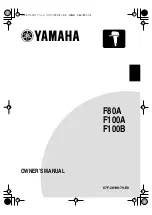
Table 5: Function of Switches S1, S2 and S3
Switch
Function
Switch #1 (S1)
ESP32 Partition Selection Switch (OTA-App / User-App selection)
Using this switch you can toggle between OTA application
and User application on ESP32
Switch #2 (S2)
Toggle ESP32 UART#1 connection with ATmega2560 UART#0
This switch can make or break connection between UART#1
of ESP32 and UART#0 of ATmega2560
Switch #3 (S3)
Wired ATmega2560 or Wired ESP32
Using this switch you can select which micro-controller
you want to wire-program
Table 6: Switch positions for various programming modes
Programming
S1 Position
S2 Position
S3 Position
Mode
(towards)
(towards)
(towards)
ATmega2560 Wired
–
–
W_AVR
ATmega2560 Wireless
Wi-Fi symbol
Wi-Fi symbol
W_ESP / Wi-Fi symbol
ESP32 Wired
–
–
W_ESP / Wi-Fi symbol
ESP32 Wireless
Wi-Fi symbol
Wi-Fi symbol
W_ESP / Wi-Fi symbol
2.1.6 ICSP connector
This is a
six
-pin
ICSP (In-Circuit Serial Programming)
or
ISP (In-System Program-
ming)
header of ATmega2560. For more details about ISP and boot-loader, refer to Sec-
tion
. The ICSP connector pins are shown in Figure
Note:
If you use ISP programmer with the eYFi-Mega board and try to load .hex file on to
ATmega2560 then boot section code will get erased and the ATmega2560 will no longer
be programmable via wired connection or wirelessly. In case you accidentally erase the
boot section code you can always download the Boot-loader firmware from the website
and flash it on ATmega2560 using ISP programmer through the ICSP header pins. To
know about how to flash the boot-loader firmware on ATmega2560, refer to Appendix
2.1.7 GPIO1 header
This header is a group of pins of ATmega2560 that can be used as
General Purpose Input
Output (GPIO)
to connect any input or output peripheral devices. Apart from using
these pins as GPIO, they also have certain alternative functions, the details of the same
is shown in Figure
. This header also has two pins of VCC i.e. 5V and GND each.
13












































